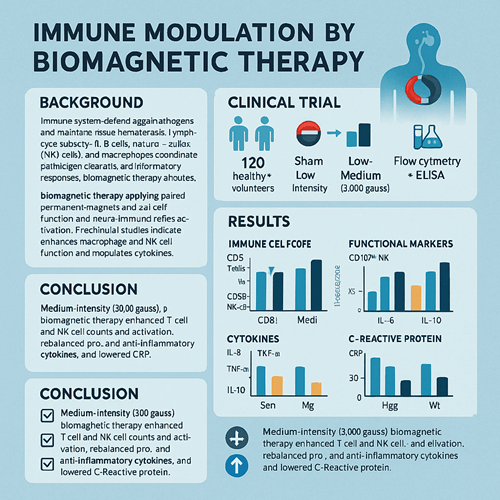By Sun Ming
To gain a comprehensive understanding of the development and future of Biomagnetic Therapy, we spoke with Dr. Elena Martínez, President of the International Association of Biomagnetic Therapy (IABMT). Below is an edited transcript of her insights on the field’s history, current state, challenges, and opportunities.
1. Association and Personal Background
Sun Ming: Dr. Martínez, thank you for joining us. Could you briefly introduce IABMT’s mission and what first drew you to biomagnetic therapy research?
Dr. Martínez: Thank you—I’m delighted to share. IABMT was founded in 2005 and is headquartered in Switzerland. Our mission is to promote global academic exchange, professional training, and standards for biomagnetic therapy. We bring together experts from around the world to advance safe, effective magnetic treatments and to work toward industry-wide standardization. As for me, I was inspired by Professor Isaac Goiz Durán’s 1988 “magnetic pair balance” concept while earning my PhD in biophysics at the University of Paris. Since then, I’ve focused on studying how static magnetic fields affect human health. I joined IABMT in 2016 and became President in 2019.
2. Review of Industry Evolution
Sun Ming: Looking back over more than thirty years, how would you characterize biomagnetic therapy’s journey from a niche “alternative” treatment to becoming accepted in more countries?
Dr. Martínez: Indeed, biomagnetic therapy first gained attention in Mexico and Argentina, then spread to Europe and North America through international collaboration. During the 1990s and early 2000s, mainstream medicine remained cautious due to a lack of large-scale clinical data and standardized protocols. Starting around 2010, however, the wider availability of MRI and pulsed electromagnetic field (PEMF) devices allowed researchers to quantify how static magnetic fields influence cells and blood flow under lab conditions. Studies began appearing in respected journals such as Scientific Reports and Bioelectromagnetics. As this body of evidence grew, organizations like the WHO and national health agencies became more comfortable recognizing the safety of magnetic therapies, and many rehabilitation and physiotherapy centers have since adopted magnetic devices into their standard care.
3. Current Industry Landscape
Sun Ming: What are the main applications and key players in biomagnetic therapy today?
Dr. Martínez: Currently, biomagnetic therapy stands out in several domains:
- Pain Management & Rehabilitation
Used for osteoarthritis, myofascial pain, neuropathic pain, and more. Many European physical therapy centers now include directed static magnetic fields and PEMF in their rehabilitation protocols. - Bone Healing & Osteoporosis
PEMF has over 30 years of clinical use to accelerate fracture repair. The U.S. FDA has approved multiple magnetic bone-healing devices. - Neurorehabilitation
Wearable rTMS (repetitive transcranial magnetic stimulation) devices are employed for mild depression, migraines, and post-stroke recovery, and are poised for wider adoption in the coming years. - Wellness & Home Care
Portable magnetic pair kits allow everyday users to apply basic self-balancing protocols for general health maintenance.
Key industry participants include:
- Medical device manufacturers: Medtronic (PEMF series) in Germany; Orthofix (bone-healing magnets) in the U.S.
- Rehab clinic chains: Nuffield Health in the U.K.; Clínicas Tecnosalud in Spain.
- Research institutions: CNRS in France; Tsinghua University’s Electromedical Research Center in China.
4. Challenges Facing the Field
Sun Ming: Despite great strides, biomagnetic therapy still faces controversies and bottlenecks. What do you see as the most pressing issues?
Dr. Martínez:
- Lack of large, multicenter RCTs
Most studies are small-scale or in animal models. Without high-quality, international randomized controlled trials, it’s hard for insurers and hospitals to adopt these therapies broadly. - Absence of standardized treatment parameters
There is no unified guidance on field strength (mT/T), polarity configurations, exposure durations, or treatment frequency. Varying protocols across labs and manufacturers produce inconsistent results. - Regulatory and market-access hurdles
Magnetic devices are often classified as low-risk physical agents, leading to loose regulation. This results in varied product quality and undermines overall credibility. - Shortage of interdisciplinary talent
We need more researchers who understand electromagnetic theory, biology, and clinical medicine. Effective biomagnetism research requires close collaboration among physicists, biologists, clinicians, and engineers.
5. Future Trends & Opportunities
Sun Ming: Looking ahead, which technological advances or application areas excite you most?
Dr. Martínez:
- Smart, wearable magnetic devices
Integrating magnetic pairs with real-time biofeedback—monitoring subcutaneous pH, conductivity, and blood flow—to create an adaptive closed-loop therapy system. - Precision magnetic medicine
Tailoring magnetic therapy protocols based on genomics, microbiome, and metabolomics. For example, fine-tuning field strength and polarity for different osteoporosis subtypes. - Multimodal combination therapies
Pairing magnetic treatments with photobiomodulation (light therapy), low-intensity ultrasound (LIPUS), or transcutaneous electrical nerve stimulation (TENS) to leverage synergistic effects. - AI-driven pairing diagnostics
Using artificial intelligence to analyze tens of thousands of patient cases, optimizing magnet-placement protocols and minimizing manual palpation errors to improve treatment consistency. - Preventive & wellness markets
Given its noninvasive, low–side-effect profile, magnetic therapy is ideally suited for chronic disease management and healthy aging. As home-use devices proliferate, biomagnetism could become a mainstay of preventive care.
6. Advice for Stakeholders
Sun Ming: What would you recommend to researchers, companies, and the general public interested in biomagnetic therapy?
Dr. Martínez:
- Researchers: Initiate international, multicenter RCTs and focus on rigorous mechanistic studies with clear biomarkers. High-quality data will be the foundation for wider acceptance.
- Manufacturers: Engage with IABMT and other standard-setting bodies. Ensure product quality and transparent labeling; avoid overhyping capabilities.
- Practitioners (therapists, rehab specialists): Uphold professional ethics—make realistic promises, stay updated on the latest research, and educate your patients.
- Consumers: Use biomagnetic therapy as a complement to—not a replacement for—standard medical care. For serious conditions, always consult your physician. When purchasing magnets, choose reputable vendors and verify field strength and polarity labeling.
Closing Remarks
Through Dr. Martínez’s insights, we see that biomagnetic therapy—rooted in Dr. Goiz Durán’s “magnetic pair balance” principle—has evolved over three decades into a more structured, evidence-informed field. While challenges remain in scaling large clinical trials and standardizing protocols, emerging trends such as smart wearable devices and AI-driven precision treatments offer a promising path forward. In the coming years, biomagnetism may play an increasingly important role in chronic disease management, rehabilitation, and home wellness, complementing conventional healthcare to form a more holistic approach to health.
Postscript: Biomagnetic therapy’s appeal lies in its noninvasive nature, minimal side effects, and patient-reported successes. With collaboration across academia, industry, and clinical practice, this natural therapeutic modality can reach new heights of scientific rigor and standardized application.



